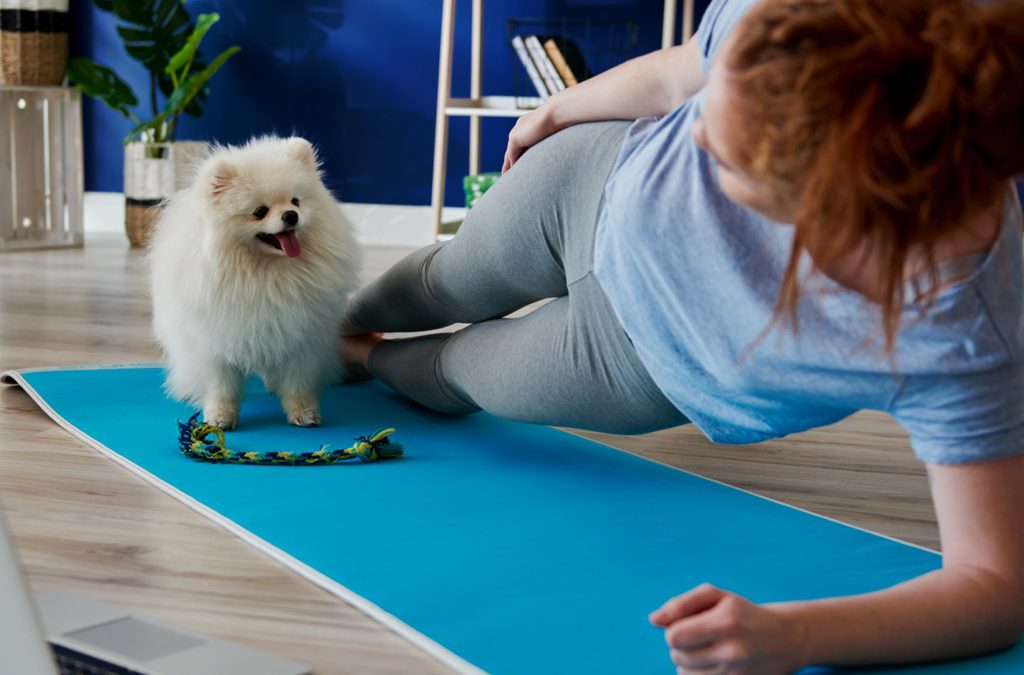Two twin brothers. The exact same injury. But two totally different paths, one with a tragic ending, and one that ended up helping more than 100,000 other people in pain.
That’s the story at the heart of a Boulder-based company, Telespine.
At first glance, it might just look like another benefit through participating companies, like Hewlett-Packard, King Soopers and IBM. Employees of these companies, among others, get access to Telespine as part of their benefits plan. Telespine aims to help alleviate neck and back pain, and it does so digitally: online, using evidence-based solutions that connect users with therapy and personalized health coaching.
You also might not realize the heart behind Telespine’s tool designed to intervene with potential back-pain sufferers to get them early intervention. The tool’s name: Back-Related Interventional Analysis.
Or BRIAN for short.
Brian, in memory of Mark Barnes’ twin brother.
Barnes, of Boulder, was a physical therapist when he and his brother both suffered herniated discs that required surgery around the same time. Due to Barnes’ background in health and wellness, he decided to create his own rehab program, to get as strong and healthy as possible. He incorporated yoga, core stability, functional fitness and other exercises. And his condition improved. While recovering, he developed many of the clinical protocols that Telespine uses to help its clients today.
“My twin brother went the other route: of opioids,” Barnes says. “Once he went down that path, it was too late.”
His brother ended up dying of complications related to the pain medication.
It’s not easy for Barnes to talk about, but he says he knows it’s important.
“No one could get to him or change it. It’s the repeatable story for everyone who gets hooked on opioids, and some 80 percent of opioid prescriptions are for back pain,” Barnes says.
The tragedy of losing his twin, combined with his success with his own recovery and the knowledge he accumulated over the years, led him to create Telespine. The goal: to extend physical therapy beyond the therapist’s walls.
But you could say he was ahead of his time. His business had a slow start.
“At the time, no one had heard of something like this or understood what it was,” he says.
MARK BARNES OF TELESPINE. COURTESY PHOTO
It was 2006 when Barnes accidentally left his hand-written physical therapy plan on his table at home, after he left for a trip to the mountains. He felt for his clients; at the time, it was standard to just give clients a piece of paper with exercises to do at home until their next visit. Barnes realized once they left his office, they seriously lacked resources and information to improve. The current system hadn’t set up clients for recovery; it had set them up to be dependent on their therapists.
So, he created what he says was the first-ever company offering virtual orthopedic physical therapy.
It slowly grew and evolved, and so did Barnes. When he came to Boulder in 1993, he started his own practice — one of only four physical therapy offices in town — with just $2,800. He went on to get a degree in exercise physiology at the University of Colorado, got his master’s in physical therapy and then a doctorate with an emphasis on spinal biomechanics and back pain.
Today, Telespine is offered to individuals and markets to self-funded companies. (The main reason, next to the common cold, that people miss work is due to lower back pain, according to Barnes.) Telespine hired a doctor from National Jewish Hospital as medical director, and things began taking off.
The program provides patients with customized, eight-week programs that feature instructional videos, lifestyle advice and easy access to a certified health coach. (You can chat with your coach and ask questions on your computer.) Based on information from more than 100 clinical studies on low back pain, Telespine offers tools and resources via the web. You log into your online portal from your computer, phone or tablet, and follow the guidelines, which have three phases: a recovery, corrective and dynamic phase.
TELESPINE.
In the first phase, you learn strategies to feel better right away. In the corrective phase, you learn how to correct structural imbalances and restore mobility. In the last phase, you build more strength and flexibility and you learn functional movements to improve coordination and strength.
Studies show Telespine has been successful, too. About 75 percent of users say they are more satisfied than with traditional office visits, and other studies have found it is more effective at reducing lower back pain than traditional therapy.
Telespine’s belief: most of the time, people don’t need to visit an office, get injections, surgeries and more to help their lower back. According to Telespine, more than 96 percent of low back pain is not from an accident or injury. It’s a lifestyle issue that comes from posture, strength and awareness that leads to movement dysfunction and discomfort.
“It’s that we’re sedentary and sit all day. Our core isn’t strong. We have no balance. And we’re reacting to stress,” Barnes says.
Telespine claims its eight-week program is proven and can provide lasting relief in just 10 minutes per day.
“We took all the science and married it to a behavior-change approach developed with our medical director, whose approach has been tested on more than 2 million patients,” Barnes says.
Whereas Telespine was early in the marketplace, Barnes says it has now finally hit its stride. Growth was 2,000 percent between December and Jan. 1.
“We provide meaningful change the quality of their life,” Barnes says. “People are miserable with back pain, and helping that is very rewarding.”
